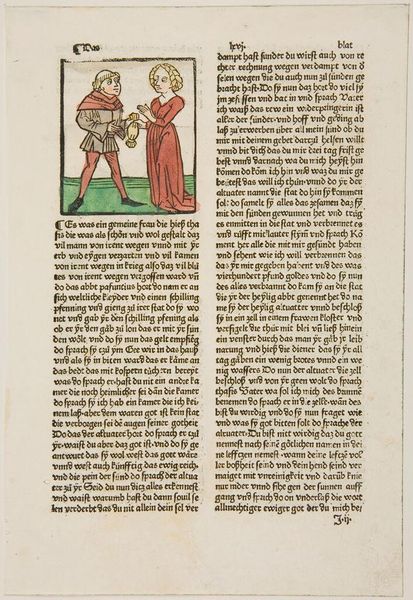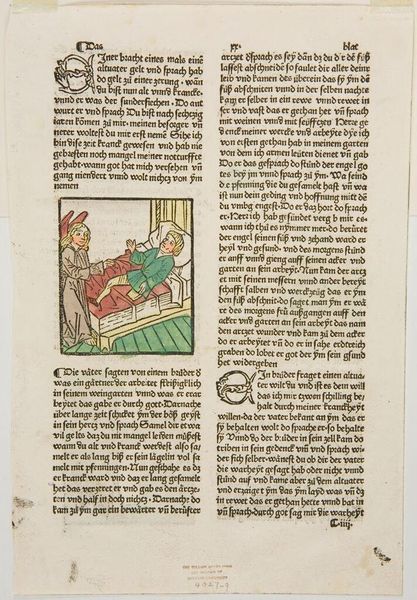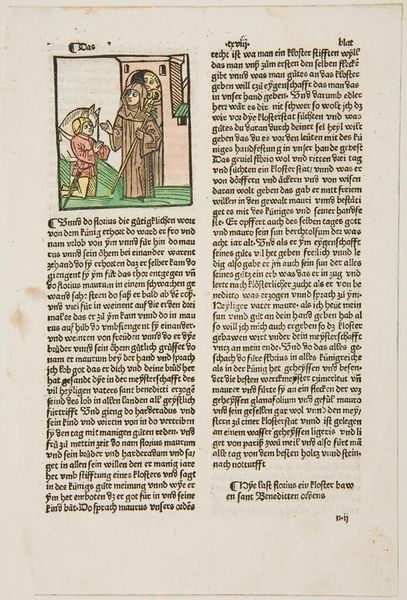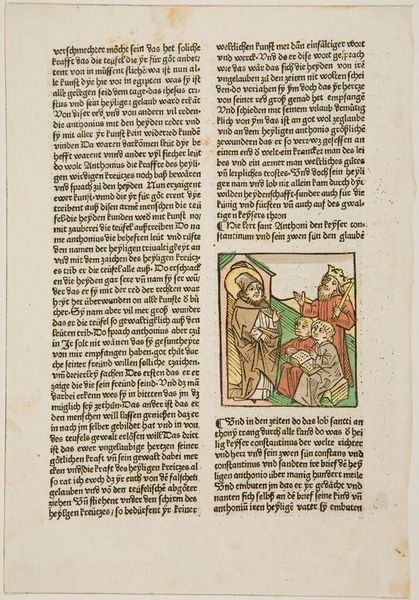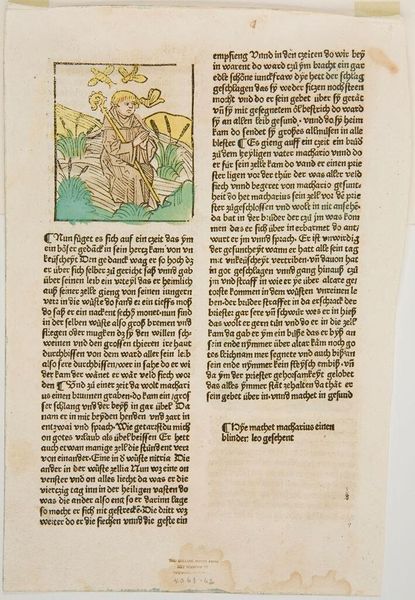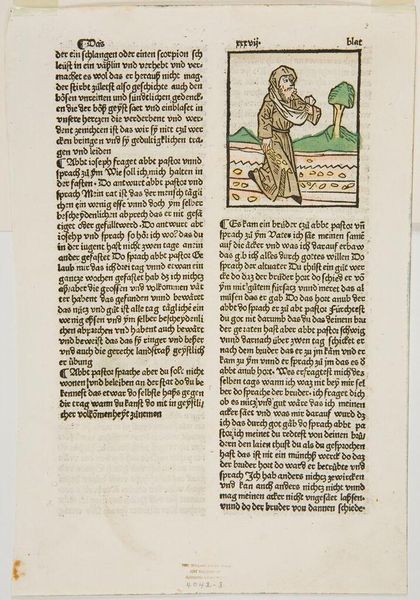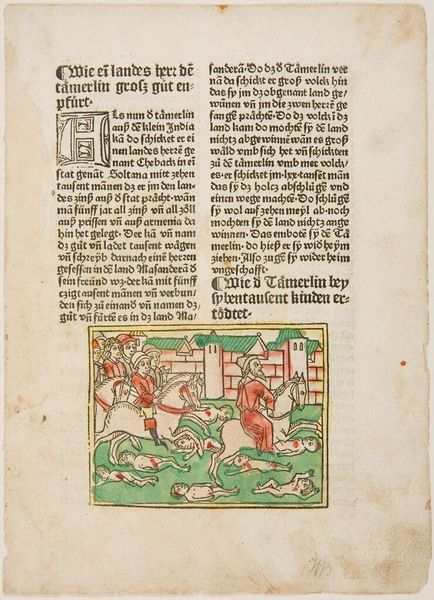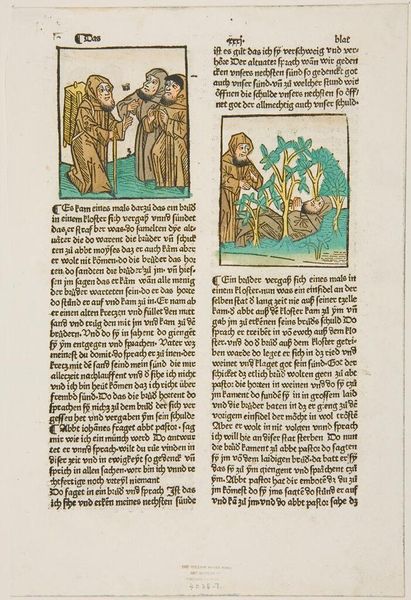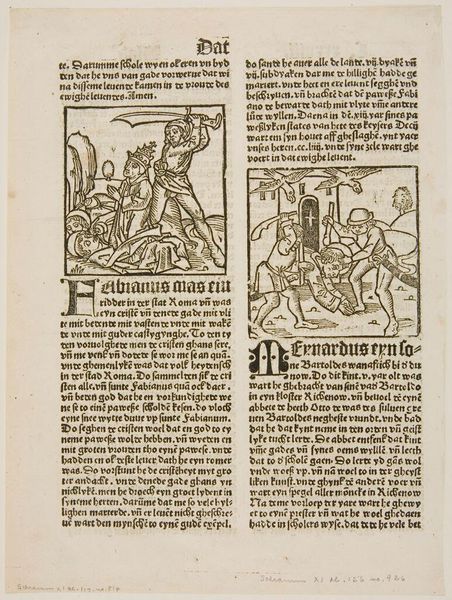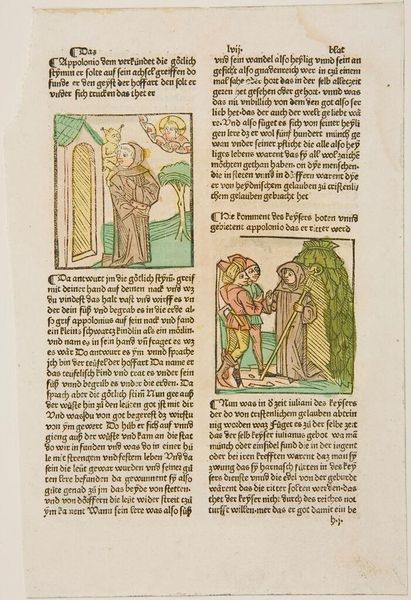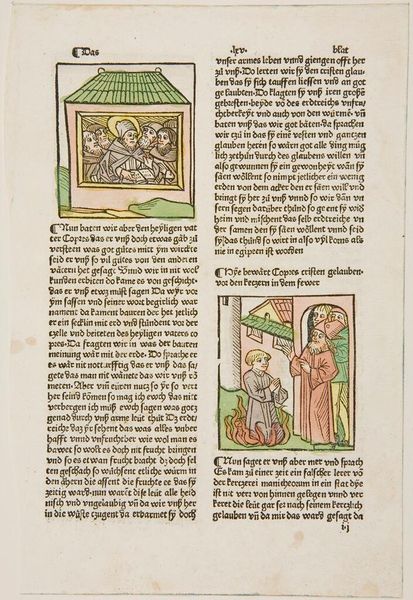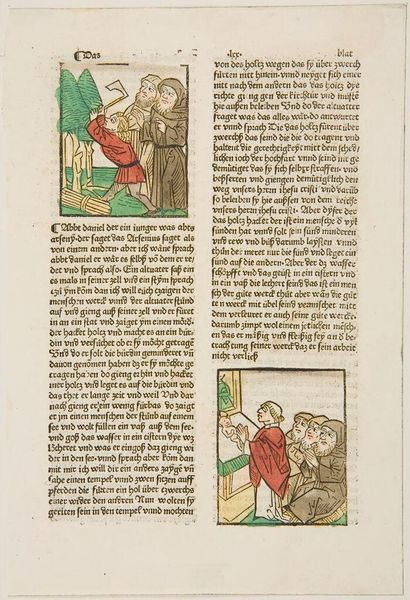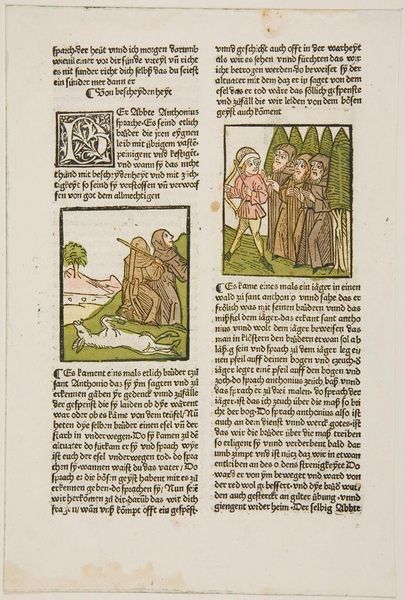
Death of Saint Polycarp; verso: Conversion of Saint Paul c. 15th century
Copyright: CC0 1.0
Curator: This is a fascinating example of early printmaking. The Harvard Art Museums hold this page titled "Death of Saint Polycarp; verso: Conversion of Saint Paul" by an anonymous artist. Editor: It looks like a storyboard, almost comic-like, with figures flattened against bright, rudimentary colored blocks. I find the scene of Saint Paul's conversion on horseback rather striking, like a vision bursting forth. Curator: The artist uses bold woodcut lines and lettering to tell two biblical stories. I see the clear symbolic importance attached to Saint Paul's sudden blindness, which is visually emphasized by the blindfold and his pose. Editor: The image of Paul tumbling from his horse struck by divine light is an enduring symbol. It makes me think about sudden epiphanies and dramatic shifts in perspective. The composition directs my eye from left to right, mirroring Paul's transformative journey. Curator: Absolutely. The juxtaposition of the two scenes offers a powerful visual narrative. The burning of Polycarp is balanced with Paul's revelation. It's a reminder of the complex relationship between faith, persecution, and transformation within early Christian history. Editor: Considering its small scale and humble materials, this print holds a potent and memorable story—visually capturing not just events, but the psychological impact of conversion and martyrdom.
Comments
No comments
Be the first to comment and join the conversation on the ultimate creative platform.

